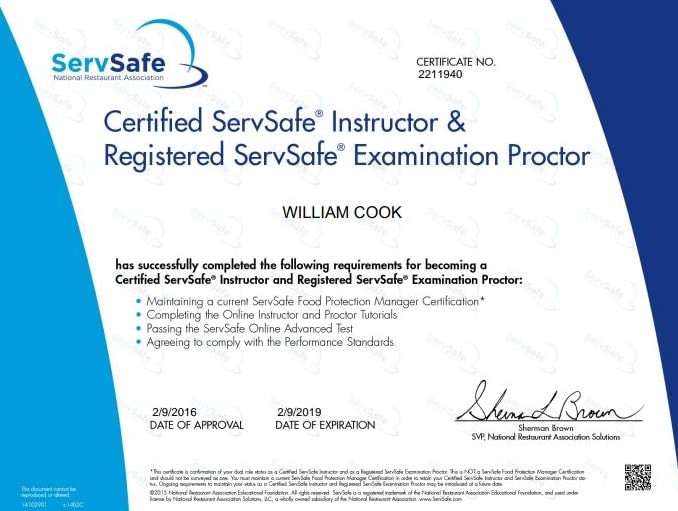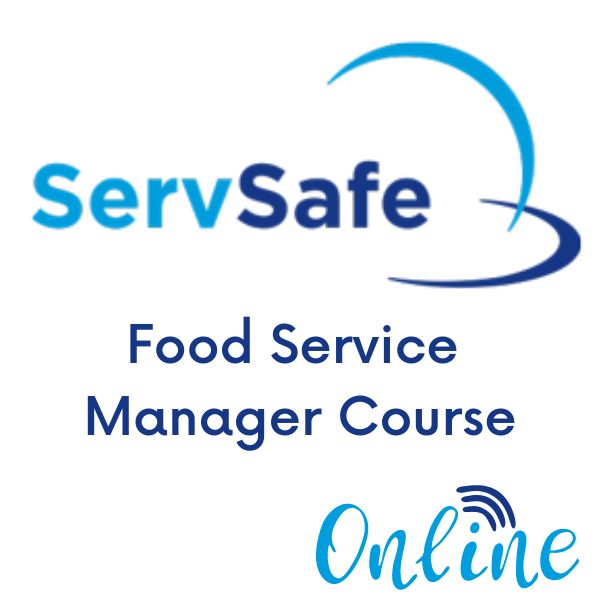Trick Responsibilities and Training for Aspiring ServSafe Managers in the Food Market
Trick Responsibilities and Training for Aspiring ServSafe Managers in the Food Market
Blog Article
Effective and rapid Food Trainers Training for Accreditation
In the food solution industry, the importance of reliable and rapid food handlers training for certification can not be overemphasized. Appropriate training makes sure that staff members are knowledgeable concerning essential food safety and security methods, ultimately guarding public health and enhancing operational effectiveness.
Importance of Food Safety And Security Training
Although food safety and security training might appear like a fundamental need for food trainers, its relevance can not be overstated. The food market is inherently at risk to a variety of health and wellness risks, including foodborne health problems that can occur from incorrect handling, storage space, and preparation methods. Effective training gears up food handlers with the knowledge required to minimize these threats, thereby making certain the security and top quality of the food being served.
Moreover, food safety training cultivates a society of liability and diligence amongst team. They are extra likely to stick to procedures and report prospective threats when employees recognize the crucial duty they play in keeping hygiene standards. This aggressive method not only secures customers yet additionally enhances the reputation of the establishment.
Thus, investing in comprehensive food safety and security training is not just a lawful formality but a tactical decision that safeguards public health and maintains service practicality. Inevitably, the importance of food security training prolongs past individual duty; it is a foundational aspect that sustains the honesty of the entire food supply chain.
Key Components of Training Programs

First of all, the training material must cover critical subjects such as cross-contamination, appropriate food storage space, temperature level control, and individual health practices (servsafe manager). This ensures that food trainers are well-versed in the vital principles of food security
Secondly, the educational approaches employed in training programs play a crucial function in improving understanding and retention. Utilizing a mix of interactive techniques, such as hands-on presentations, seminar, and multimedia discussions, can deal with diverse discovering designs and boost involvement.
Finally, robust assessment approaches are vital for reviewing the efficiency of the training program. Implementing quizzes, sensible assessments, and real-world situations not just aids in strengthening understanding but additionally makes sure that food handlers can use what they have actually discovered in their daily tasks.
Benefits of Rapid Accreditation
Quick accreditation in food handling offers various benefits, specifically in today's hectic food market. One of one of the most considerable advantages is the capability to quickly equip staff members with necessary understanding and skills, making certain conformity with health and wellness policies. This quickens the onboarding procedure, permitting restaurants and food service establishments to preserve operations without prolonged delays.
Furthermore, rapid accreditation programs are typically a lot more available, fitting a diverse series of discovering timetables and styles. These programs generally utilize engaging methods such as online modules or interactive workshops, which can improve retention of essential details.

In addition, rapid accreditation can minimize the risk of foodborne diseases, which can significantly impact a company's online reputation and bottom line. By ensuring that all employees are swiftly trained and certified, establishments can foster a society of food security, eventually profiting both business and its customers. Overall, rapid accreditation stands for a tactical benefit in an affordable sector.
Tips for Efficient Implementation

Effective implementation of food handler training programs is important for look what i found making the most of the advantages of quick qualification. To achieve this, companies should start by plainly specifying their training goals and straightening them with regulative demands. This ensures that all essential subjects are covered comprehensively.
Using modern technology can improve the training procedure. Online components permit adaptable organizing, enabling workers to finish training at their comfort while decreasing downtime. In addition, including interactive elements, such as quizzes and scenario-based knowing, can boost engagement and retention of information.
It is also vital to develop a structured timeline for training sessions, enabling sufficient time for both instruction and useful application - servsafe. This might consist of hands-on demos of proper food handling methods, which are critical for enhancing understanding
Regular interaction with staff concerning training assumptions and end results cultivates a society of responsibility and urges involvement. Providing accessibility to additional sources and support products can improve understanding and deal with any type of remaining inquiries.
Reviewing Educating Efficiency
Examining the performance of food trainer training programs is crucial for making sure that employees not just obtain the essential expertise yet likewise apply it in their day-to-day jobs. A detailed analysis procedure can include a number of techniques, including pre- and post-training analyses, straight monitorings of food taking care of techniques, and staff member comments surveys.
Pre- and post-training assessments aid to measure the knowledge obtained by staff members, supplying quantitative data that can suggest the effectiveness of the training material. servsafe manager. These assessments must cover vital subjects such as food security laws, individual hygiene standards, and cross-contamination avoidance
Direct monitorings of staff members in their workplace are important for evaluating the practical application of discovered abilities. Monitorings allow instructors and monitoring webpage to determine locations where workers might struggle and require additional assistance or re-training.
Moreover, collecting comments via surveys from individuals can supply understandings into the training's importance, pacing, and general efficiency. Involving employees in this responses process can promote a culture of constant renovation.
Final Thought
In final thought, fast and efficient food handlers training for certification is crucial for keeping high food safety requirements. Continuous analysis of training performance even more ensures that food safety techniques stay reliable and existing in a vibrant industry setting.
In his explanation the food service market, the importance of quick and efficient food trainers educating for qualification can not be overstated.Although food safety and security training might seem like a fundamental demand for food trainers, its value can not be overstated. Reliable training gears up food trainers with the expertise essential to minimize these threats, consequently guaranteeing the safety and security and quality of the food being served.
Eventually, the value of food safety and security training expands beyond private responsibility; it is a fundamental aspect that sustains the integrity of the entire food supply chain.
In verdict, quick and effective food handlers training for qualification is vital for maintaining high food safety criteria.
Report this page